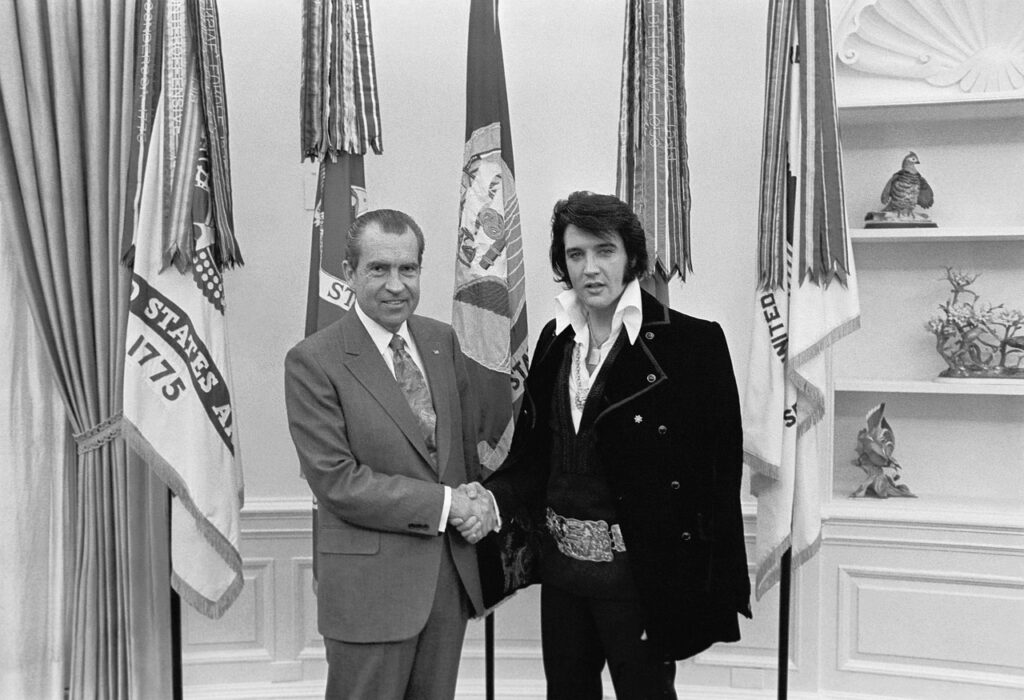In the third week of October, history has unfolded in a strange mix of grandeur, horror, and sheer oddity, where queens met their fates, economies crumbled, and beer floods swept through city streets.
October 16, 1793: The Queen Falls
On a cold autumn day, Marie Antoinette, once the dazzling queen of France, took her final walk. The clatter of the guillotine was the ultimate punctuation mark on a life that had once epitomized luxury and excess. But by the time she faced her execution, stripped of her power and title, she had become the embodiment of royal downfall. Her famous quip “Let them eat cake” may be more myth than reality, but the Revolution’s need for scapegoats was very real. Her execution signified a tipping pointthe Reign of Terror was fully underway, and nobody was safe.
October 17, 1931: Capone’s Crime Doesn’t Pay

Al Capone was a man who ruled Chicago from the shadows, not with political might, but with tommy guns and bootleg liquor. He controlled speakeasies and ran the underworld like a kingpin. But it wasn’t his bloodsoaked criminal empire that brought him downit was taxes. On this day in 1931, Capone, the gangster who seemed untouchable, was convicted not for murder or racketeering, but for tax evasion. It was a bitterly ironic end for the man who once bragged, “They can’t collect legal taxes from illegal money.”
October 18, 1867: Alaska, the Frozen Bargain
Seven million dollars for an icy wasteland? “Seward’s Folly,” critics sneered when the U.S. Secretary of State bought Alaska from Russia. But William Seward saw the land’s potential beyond its glaciers and cold winds. And as it turned out, the naysayers were wrong. Alaska became a goldmine of resources, both literally and figuratively. The land, with its untapped wealth of oil and minerals, would prove to be one of the shrewdest investments in American history.
October 19, 1781: The British Bow Out at Yorktown
In Yorktown, Virginia, British forces under General Cornwallis could no longer hold out. The siege had gone on too long, and the combination of American and French forces sealed their fate. Cornwallis’ surrender to George Washington on this day didn’t just end a battleit effectively ended the American Revolution. The British Empire’s grip on its rebellious colonies had finally slipped, and the United States was on the brink of recognition as a sovereign nation.
October 20, 1973: Nixon’s Saturday Night Massacre

The Watergate scandal was a slowrolling disaster for Richard Nixon, but October 20, 1973, was when it hit a fever pitch. In a desperate bid to stymie the investigation, Nixon ordered the firing of special prosecutor Archibald Cox, which led to the resignation of two top Justice Department officials. The public was horrified, and the “Saturday Night Massacre” cemented Nixon’s fate, adding fuel to the fire that would eventually lead to his resignation.
October 21, 1805: Trafalgar’s Thunder
The Battle of Trafalgar was fought with cannon fire and the cries of dying men, but its result would echo for generations. Admiral Horatio Nelson’s fleet shattered the combined forces of France and Spain, ensuring Britain’s dominance at sea for over a century. But this victory came at a cost. Nelson, Britain’s greatest naval hero, was struck down in the heat of battle. His death immortalized him as a legend, the man who secured the seas but never lived to see the aftermath.
October 22, 1962: The World Holds its Breath
In the fall of 1962, the world stood on the edge of oblivion. U.S. President John F. Kennedy addressed the nation, revealing that Soviet missiles had been placed in Cuba. The Cuban Missile Crisis had beguna 13day standoff that could have ended in nuclear annihilation. The tense negotiations that followed were a triumph of diplomacy over destruction, averting disaster and forcing both the U.S. and the Soviet Union to stare down the abyss and step back.
October 16, 1964: China Joins the Nuclear Club
China’s rise to power was punctuated by a deafening boom on this day. The successful detonation of its first nuclear bomb made the world sit up and take notice. No longer a sleeping giant, China had muscled its way into the exclusive club of nucleararmed nations, a move that shifted the balance of global power forever.
October 17, 1979: Mother Teresa’s Nobel Moment

In a world often defined by greed and conflict, one figure stood out for her quiet humility and dedication to the poorest of the poor. Mother Teresa’s work in the slums of Kolkata earned her the Nobel Peace Prize, not just for her compassion, but for embodying the kind of service to others that transcends borders and religions. On this day, the world recognized her tireless efforts to give dignity to those who had been forgotten.
October 19, 1987: Black Monday’s Freefall
The stock market is a house of cards, and on October 19, 1987, it all came tumbling down. In a single day, the Dow Jones Industrial Average dropped by 22.6%, causing chaos on a global scale. Known as “Black Monday,” it remains one of the largest oneday crashes in market history. The collapse didn’t just shock Wall Streetit rattled economies worldwide, bringing fears of another Great Depression.
October 17, 1814: The London Beer Flood
Yes, you read that righta beer flood. When a massive vat of beer exploded at Meux & Co. Brewery in London, it unleashed 320,000 gallons of ale into the streets of Tottenham Court Road. It sounds like a drunken fantasy, but it was a real tragedy. The torrent destroyed homes, killed eight people, and turned a bustling city street into a river of booze. Today, it remains one of history’s strangest disasters, a bizarre reminder that sometimes, even beer can be deadly.
October 18, 1356: Basel’s Earthquake and the Dragon

Back in the 1300s, if your city got flattened by an earthquake, you weren’t blaming tectonic plates no, that was the work of something more sinister. In Basel, they believed a dragon had clawed its way out of the earth and unleashed hell on the city. The devastation was real, even if the fire-breathing culprit wasn’t. Churches sprouted up as the terrified citizens did what they could to appease the beast. While we’ve since figured out what really happened, Basel’s quake remains forever intertwined with that legendary dragon, a myth as enduring as the stone buildings that replaced the rubble.
October 19, 1917: The Strange Dance in Strasbourg
1917 was no time for dancing. War was grinding Europe down to dust, but in Strasbourg, a strange fever took hold. Just as in the infamous Dancing Plague of 1518, a handful of women started dancing. They danced in the streets, in doorways, wherever their feet took them, as if they were trapped by some invisible force. Hours passed, yet they wouldn’t stop. Was it the trauma of war, or something even deeper in the human psyche? No one really knows, and the image of these women spinning madly while bombs fell in the distance still sends shivers down spines.
October 20, 1977: Disco’s Destruction at Comiskey Park
Disco: the glittering, flashing, thumping heart of the ’70s. But like all stars that burn too bright, it couldn’t last. By 1977, the disco backlash was in full swing. And nothing captured that animosity quite like “Disco Demolition Night” at Chicago’s Comiskey Park. What started as a quirky protest led by radio DJ Steve Dahl morphed into chaos as thousands of rowdy fans poured onto the field, blowing up disco records in a feverish rage. The game was canceled, and disco itself was declared dead that night. It was loud, it was messy, and it was the end of an era.
October 20, 1803: The Senate Seals the Louisiana Deal
There are moments in history that, though quiet and uneventful in the moment, alter the course of nations. The Louisiana Purchase is one such moment. On October 20, 1803, in a deal inked for a mere $15 million, the U.S. Senate ratified the acquisition of a vast stretch of land that doubled the size of the United States. Napoleon had his reasons for selling,it was all about the money,but for America, it meant opportunity. Rivers, plains, mountains,it was all theirs. The westward march had begun, and nothing would ever be the same.
October 21, 1944: Kamikazes Unleashed
Desperation breeds terrifying innovation. By late 1944, Japan’s back was against the wall, and they turned to tactics that stunned the world. Kamikaze pilots,men trained to crash their planes directly into Allied ships,made their brutal debut during the Battle of Leyte Gulf. It was a strategy born from despair, a final attempt to turn the tide of war. But while the kamikazes’ determination was fierce, it wasn’t enough. Their attacks became a grim symbol of Japan’s struggle as the war drew to its bloody close.
The third week of October isn’t your usual stroll through history’s halls. It’s dragons and dancers, disco riots and desperate measures. From myth to madness, from life to death, it’s a week that proves history is full of wild twists and turns,sometimes stranger than fiction, and always unforgettable.
This is the kind of week that makes you wonder are we just actors in a strange, unpredictable play?




